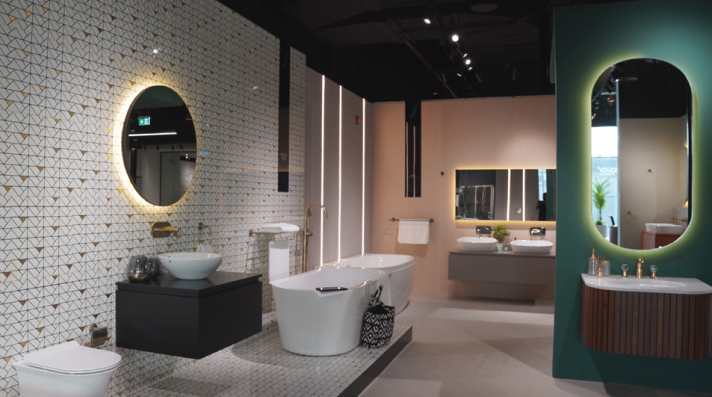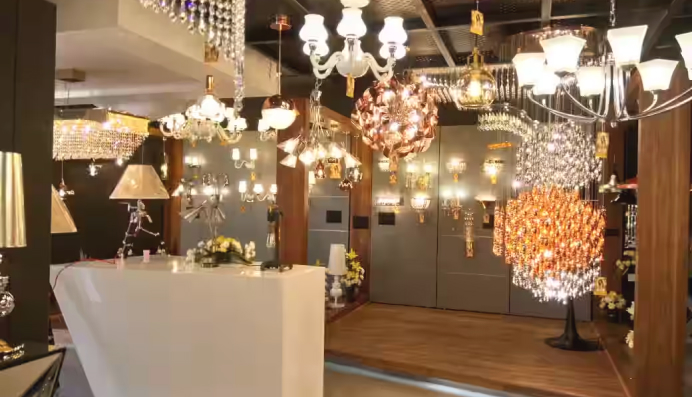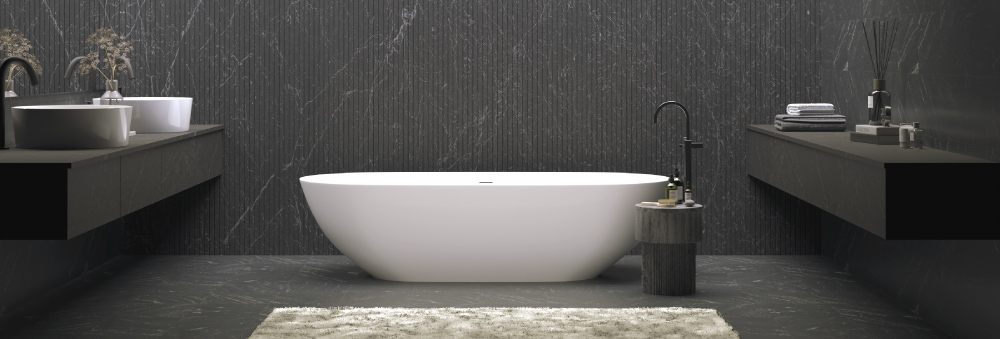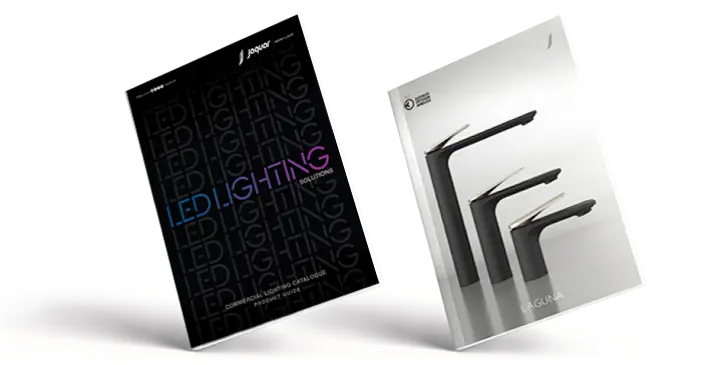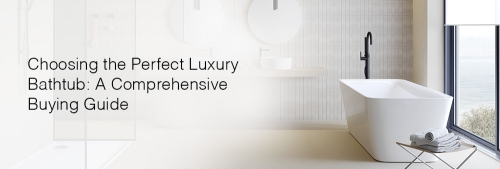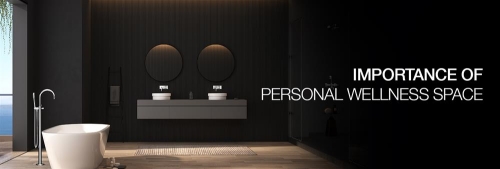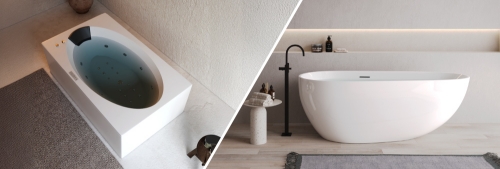Elevating your daily comfort often begins with transforming the bathroom into a more refined space. People are transforming their bathrooms into spa-like sanctuaries in regions like the UAE, where interior design reflects comfort and sophistication. And at the centre of this upgrade? The perfect bathtub.
A bathtub isn't just about soaking in style; it's about thoughtful planning, spatial harmony and personal comfort. Whether building your dream home or updating your existing layout, getting the right fit is essential. Too big can dominate the space; too small may compromise your relaxation.
Understanding standard bathtub dimensions ensures you make an informed decision that aligns with your space, needs and lifestyle. Read this guide for practical tips to help you select the ideal bathtub size.
Bath Tub Size Tips
1. The Importance of Bathtub Size
When purchasing your bathtub, you have more to consider than just how it looks; size is essential for comfort, accessibility, and how well it fits into the area that you have. A tub that is too large can dominate a small room, while a tub that is too small may not allow the comfort of a proper soak.
2. What are the standard dimensions of a bathtub?
Standard tubs can come in a variety of types and have slightly different bathtub dimensions depending on the tub model and installation type.
- The most common standard tub size is approximately 60 inches long (152 cm), 30 inches wide (76 cm), and 14 to 16 inches high (35 to 40 cm).
- Most residential bathrooms can easily adjust these dimensions, making them a practical option for shower-tub combinations and free-standing tubs.
Bathtub Size in cm:
- In metric units, a standard bathtub size in cm generally falls between 150–170 cm in length and 70–80 cm in width.
3. Choosing the Right Bathtub Based on Room Type
A). For Small Bathrooms:
- If you have limited space, select a smaller bathtub, about 120–140 cm long. Even smaller tubs will provide basic relaxation without crowding the space.
- Wall-mounted or built-in bathtubs can also save floor space.
B). For Larger Bathrooms:
- A freestanding bath is a great choice. These tubs usually measure 170–180 cm long and create a spa-like feel.
- Ensure at least 60 cm of space around the tub for comfortable access and cleaning.
C). Corner Tubs:
- The standard corner bathtub dimensions range from 130–150 cm per side. These are excellent space-saving options for irregular layouts or L-shaped bathrooms.
Also Read: Choosing the Perfect Bathtub: A Comprehensive Buying Guide
Know the details of Jaquar's bath & light range by downloading respective catalogues.
Download Catalogue
Also Read: Steam Bath Benefits - 6 Health Benefits of Steam Room Bathing
Things to Consider When Measuring a Bathtub
1. Bathroom Design
Before settling on a bathtub, it is essential to consider your bathroom's design. The most logical place to start is measuring the floor area for the bathtub. Keep in mind the length and width and make note of any legitimate space requirement from existing objects in the room, such as sinks, toilets, cabinets and doors. This will help determine if the tub adds to the room or brings the area together. Also, look at the overall layout and if it feels symmetrical and functional; ideally, the bathtub should fit the area, not completely alter it. A compact or corner tub would fit more efficiently if you have a smaller bathroom.
2. Water Capacity
The size of your tub is directly related to the amount of water it can hold, and can impact water and energy consumption. Larger tubs are often luxurious, but they will also require more hot water to fill. Before deciding on a deep soaking or freestanding tub, check the size of your water heater to determine if it holds enough water to support you and the tub's capacity. If you have to refill your tub and your water heater cannot provide enough hot water for the tub to reach a steady temperature, you will have an inconsistent temperature, or you may incur an additional expense of upgrading your water heater.
3. Drain and Faucet Location
Every bathtub comes with a drain and faucet located on the left, right or center. You need to match the location of these features with your existing home plumbing because if you are out of alignment, it can lead to expensive and complicated plumbing changes to your home. For example, if your plumbing is set up for a left-side drain tub and you choose to install a right-drain tub, you will need to re-route your plumbing before installing the tub, which could take time and money in labour and materials. The same goes for the faucet location as you need to make sure it will allow for the shower mixer tap, or wall bathroom plumbing fixtures you are going to use in the space.
4. Height and Accessibility
Tub height is significant in how user-friendly and safe it is, especially for households with kids, elderly family members, or people having disability. High-walled tubs may look stylish, but can be challenging to step into or out of without assistance. For improved accessibility, opt for a bathtub with a lower threshold or consider built-in support features like grab bars. If you're designing for future-proofing, a mid-height tub with anti-slip surfaces and easy entry/exit design is ideal.
Also Read: Importance of Personal Wellness Space in Modern Bathroom
Finding the right bath tub size involves balancing what is comfortable for you, what is aesthetically pleasing, and what is actually available space-wise. When you are renovating a small bathroom and looking for a new choice or starting from scratch on a master bath, knowing bathtub measurement standards will be an advantage for you in the long run.
Explore the vast collection of bathtubs by Jaquar, a trusted global brand offering premium bathroom solutions in the UAE.
FAQs:
Q. What is a standard bathtub size?
A.Standard bathtub size is usually 60 inches (152 cm) long x 30 inches (76 cm) wide x 14 to 16 inches (35 to 40 cm) high.
Q. What size bathtub is best for a small bathroom?
A.For a small bathroom, a bathtub size of 120 - 140cm (48 - 55 inch) long is best.
Q. What are standard corner bathtub sizes?
A.Standard corner bathtubs are typically 130 to 150 cm on all sides.
Q. What is a common freestanding tub size?
A.A freestanding bath is typically 170 to 180 cm long and 70 to 80cm wide.
Q. How much space do you need around a bathtub?
A. Allow a minimum of 60cm of clear space around the tub for comfort and cleaning purposes.
Explore Our Bathroom Categories:

